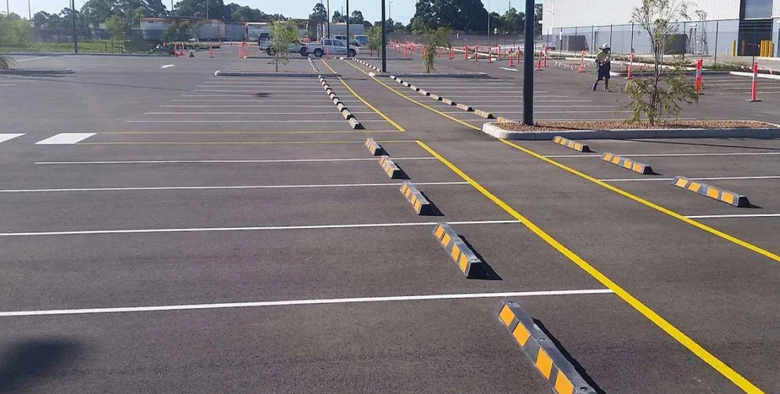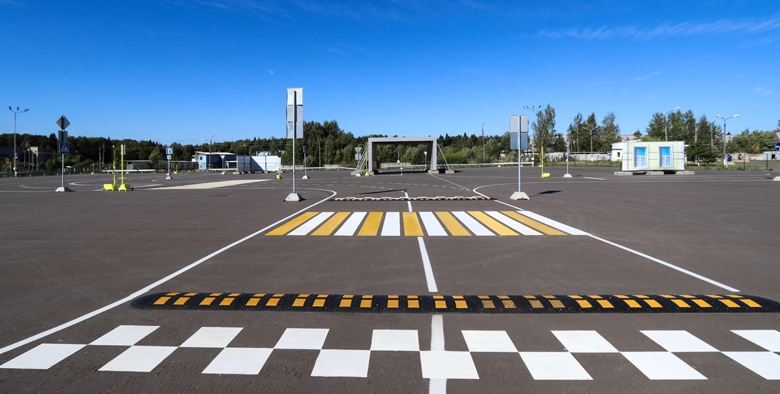Parking lots wear out quietly. One day, everything looks fine, and the next, you notice cars drifting outside their spaces and walkers stepping into traffic because the paint has faded away. If you own or manage a lot, you may be asking, “When should I repaint the stripes?”
Re-stripe when lines look dull, drivers park crooked, the lot fails safety checks, the coating chips off, or new rules require updated markings. Knock these out early to keep traffic orderly, meet code, and avoid accidents.
Below, we’ll dig into each sign, share quick checks you can do today, drop a handy table of repaint timelines, and finish with clear action steps and FAQs.
Sign 1: Faded or Spotty Paint
Even fresh asphalt slowly bleaches under the sun, rain, and tires. When white or yellow lines turn gray, it’s harder for drivers to see where to park.
Quick Tip: Repaint before more than 25 % of the surface shows bare asphalt. Catching it early cuts labor and paint costs later.
Sign 2: Cars No Longer Park Straight
When people angle their vehicles or leave odd gaps, the markings are probably to blame. Poor alignment shrinks capacity and slows traffic flow.
Stand at the lot entrance during a busy hour. Count how many drivers back up to readjust. More than two in ten is a red flag.
Sign 3: Safety Hazards Appear
Crosswalks, loading zones, and fire lanes exist for one purpose—safety. If those stripes fade, pedestrians may walk where forklifts roll, and emergency crews may lose precious seconds.
Danger: A property owner can be held liable if faded markings contribute to an injury. Courts often treat visible upkeep as evidence of reasonable care.
Sign 4: Surface Damage Shows Through
Lines fail faster when the asphalt chips, cracks, or bleeds oil upward. Paint flakes off those rough patches first.
Before you repaint, patch potholes and seal cracks. Paint sticks longer to a clean, dry, even surface.
Sign 5: Codes or Layout Needs Change
Cities update fire lane widths, ADA standards add van-accessible spots, or you remodel and need new traffic flow. Old stripes no longer match the law.
Fact: The Americans with Disabilities Act (ADA) requires at least one van-accessible stall for every six accessible spaces. Each must show a wheelchair symbol and rear-access aisle.
How Often Should You Refresh?
| Lot Type | Typical Re-striping Cycle | Why It Varies |
| Retail plaza | 12–18 months | High turnover of cars all day |
| Office campus | 18–24 months | Peak traffic is only in the morning & evening |
| Manufacturing | 6–12 months | Heavy trucks & forklifts wear paint quickly |
| Hospital | 12–15 months | 24/7 use plus strict safety rules |
| School | 24 months | Seasonal use, lighter loads |
Values assume standard waterborne traffic paint in a four-season climate.
Putting It All Together
Step 1: Inspect Monthly
Walk the lot with a clipboard. Snap photos of worn areas for comparison next month.
Step 2: Prioritize Safety Zones
Refresh crosswalks, stop bars, and ADA symbols first. These control risk, so never postpone them.
Step 3: Schedule During Off-Peak Hours
Lot unavailable? Plan night shifts or weekend work to cut disruption.
Step 4: Choose the Right Material
Epoxy and thermoplastic coatings cost more but last 3–5 times longer than basic latex. They also cure faster in cold weather.
Step 5: Hire Qualified Stripers
Look for crews who own automatic striping machines, follow local code, and offer a warranty. Ask for photos of recent jobs with similar traffic loads.
Conclusion
Refreshing parking lot lines isn’t just cosmetic; it guards safety, keeps traffic organized, and shows you care about every visitor. Watch for fading paint, crooked parking, rising hazards, surface damage, and rule changes. Act on these signals promptly, and your lot will serve drivers well year-round. When it’s time, South Park Striping can handle the job quickly and correctly.
FAQs
How long does fresh striping take to dry?
Standard waterborne paint is dry to the touch in 30 minutes and ready for traffic in about 60 minutes, weather permitting.
What temperature is best for painting a lot?
Air and pavement should stay above 50°F for 24 hours. Cooler temps slow curing and shorten paint life.
Can I paint over old lines without grinding them off?
Yes, if the old paint is still bonded. Power-wash to remove dirt, let it dry, then apply new stripes. Damaged or multiple ghost lines should be grounded first.
Is a reflective glass bead worth the cost?
For lots with night traffic, beads boost visibility at a low expense. They’re optional but wise for hospitals and distribution centers.
Do I need to close the entire lot?
Often no. Block one section at a time and keep at least one entrance open. Orange cones and clear signage guide drivers safely around the crew.

